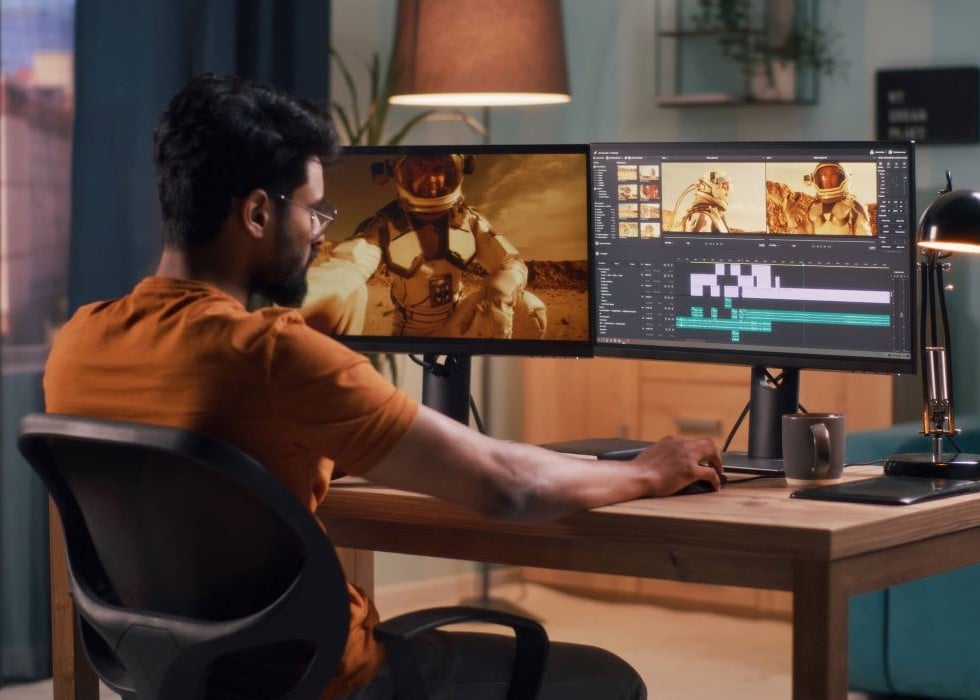
Encoding vs Decoding: How Do They Differ in Video Production?
Video production in the digital age can be intimidating, particularly if live broadcasts are part of your workflow. But, as most filmmakers will tell you, the fundamentals of the moving image have changed little over the past century; there are just more tools at your disposal now. If you’ve ever captured video footage with a digital camera or mobile device, you know that video files can be large and tricky to store — and those file sizes become a serious problem when you’re dealing with high-res video or professional live-streaming. That’s where encoding and decoding come into the equation.
Video Encoding, Explained
Definition of Video Encoding
A good hardware-based encoder takes all the data from your raw video footage, converts the file to a more manageable size, and allows for efficient video distribution. This serves a couple key purposes, the first of which is file compression — taking the captured image (and audio) and exponentially reducing the file size, with or without a loss of some data or quality in the end result.
The process of video encoding or transcoding also tackles the issue of compatibility; a given camera may save and output video in a specific format or formats, whereas the platforms you’re distributing your project to might require certain file types or codecs. Encoding lets you save or broadcast at a file format and codec (or compression-and-decompression algorithm) of your choice.
How Does Encoding Work
A video encoder takes a raw video signal and squeezes it down, using a complex compression algorithm (or “codec”), into an exponentially smaller output size. The resulting file can be published to a disc, broadcast on TV, transmitted over a computer network, or broadcast online in real time. Encoding has two key components: the video format (MP4, AVI, AVCHD, MPEG-2, etc.) and codec (e.g., H.264 or AVC), which denote compatibility across devices and bitrate, respectively.
A more efficient bitrate means you can squeeze more information (a higher-res image or uncompressed audio, for example) across a network faster. This is critical for reducing latency, whether you’re live-streaming on Twitch or YouTube, broadcasting a historic event on television, or covering a sporting event with a complex multi-camera setup.
Advantages of Encoding
Video encoding offers a number of practical benefits, from reduced file sizes to wider compatibility across various devices and platforms. File formats come in and out of fashion, but the essential functions of encoding will only become more important as streaming grows more sophisticated and ubiquitous. Bandwidth — the capacity of a given network or system to transfer data — is a precious resource, especially as video resolutions increase and more users adopt new, more demanding technologies.
Understanding Video Decoding
Definition of Video Decoding
If encoding is the process of compressing raw video into a usable digital format, think of decoding as the reverse. A decoder takes a compressed digital signal and reproduces as much of the original source footage (and audio) as possible within the limits of bandwidth and the technology at hand.
How Does Decoding Work?
As with encoders, video decoders include both hardware (like the Makito X4 Video Decoder or Makito X HEVC Decoder) and software-based solutions, depending on the needs of the project. While encoding is crucial for making AV signals small enough to transmit and distribute in a feasible way, decoding is vital for maintaining audio and video fidelity as a file reaches the end user. We want our 4K UHD disc or hockey match or video game to look and sound great when it reaches our monitor or television set, and good video production will keep that audience in mind every step of the way.
Challenges and Considerations in Decoding
When considering a given encoder or decoder, make certain that one is compatible with the other — and with your target broadcast or storage medium. Video formats can often be converted, but when you’re streaming high-definition footage in real time, you have to be certain that you’re using the best codec for the job. And all the pieces of your signal chain, from camera to hardware to editing software, need to be compatible from one to the next.
Choosing the right video codec often comes down to needing the lowest latency possible, or having to compromise based on bandwidth limitations, rather than quality. You might even notice these kinds of challenges when you’re streaming a popular TV show on Disney+, Netflix, or Prime Video, which is why there’s still a big demand for physical media (DVDs and Blu-rays) among entertainment buffs.
Encoding vs. Decoding in Video Production
Encoding is the process of taking raw video footage from an analog or digital source and converting it into a smaller file format for delivery. This enables you to broadcast video live over the internet, for example, or store your film on something like a Blu-ray, a 4K UHD disc, or a hard drive. Decoding, by contrast, translates an analog signal — like the picture on your television set—into a digital file format you can transmit elsewhere.
Key Differences Between Encoding and Decoding
Choosing the right codec for your broadcast or production is key to creating the right workflow for your enterprise; everything else happens pretty quickly from there. The video compression codec you use will have significant consequences for the end user’s experience, but sometimes speed or synchrony is the order of the day; quality can be time-consuming, expensive, and put a lot of demand on your hardware.
Encoding turns raw video footage into a transfer format for easy delivery across networks and devices, whereas the decoding process recovers as much of the original source video for when that signal ultimately reaches the audience or consumer.
Encoded vs. Decoded: The Takeaway
Professionals taking on new broadcast or video-production projects need to understand the differences between encoding and decoding, while keeping in mind the limitations and compatibility of whatever video codec they decide to use. Essentially, encoding is a process by which data is written, and decoding is the process by which that data is read.
The hardware and software that makes up a given signal chain will have an impact on whether the resulting video is lossless, lossy, or “visually lossless” (meaning footage that looks lossless, but still results in data loss). Lossy video files put less strain on internet bandwidth, but show an obvious degradation in quality, whereas lossless formats are ideal for projects where quality matters more than speed (a boutique Blu-ray imprint, for example, versus a live sports broadcast or Twitch stream).
FAQ:
What is the difference between encoding vs. decoding a video?
Encoding is the process of converting raw video into a specific digital format for delivery, whereas decoding takes an analog signal—such as that of a television broadcast—and converts it into digital data. The concept is the same, but they’re inverse processes, with each used for its own unique purposes.
What is an encoder?
A video encoder is the device or software used in video production to convert raw video footage into a digital file format for storage or distribution. You’ll need some form of encoder whether you’re making a scripted video for internal use or broadcasting live across online platforms like YouTube, Twitch, and so on.
What is a decoder?
Video decoders take the video from a standardized analog signal—like NTSC, SECAM, or PAL — and convert it into digital data. This technology has a wide variety of applications, from broadcasting multi-camera live events to consumer-level video capture cards.
What is a codec?
Codec is short for either “compressor and decompressor” or “coder and decoder,” depending on who you ask. Either way, it refers to the algorithmic process or program used to encode and decode a given video file. When handling footage, from principal photography to final post-production, it’s important to be aware of both the video format and codec you’re working with at a given stage. This is especially true when you’re broadcasting high-resolution (or even 4K UHD) video to an audience in real time.









